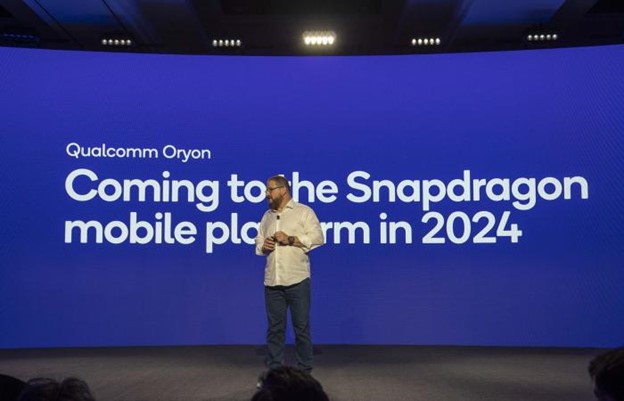Qualcomm asserted its industry leadership at the Qualcomm Snapdragon Summit 2023 in Hawaii, hinting that its Oryon CPU, designed in-house, will debut in 2024, signaling the company’s road map to maintain its lead. The Snapdragon X Elite PC chipset will feature the Oryon CPU, with future plans to introduce it to smartphones, XR devices, and possibly vehicles and supersonic jets. Qualcomm aims to compete with Apple’s in-house M series and Arm’s collaboration with Nvidia, resuming CPU design after discontinuing Kryo in 2016.

What do we think? Did Qualcomm just have an Osborne moment and hamper sales by pre-announcing a better superchip for the next generation? Road map disclosures are a tricky thing. On one hand, you want to show your road map to your customer and even potential customers so they will know you are a worthy supplier for their long-term plans. But on the other hand, you don’t want to reveal to the fickle consumers anything you are currently shipping, for fear they will wait it out.
Qualcomm announces the SoC of the future
On January 13, 2021, Qualcomm announced it would acquire Nuvia, a server CPU start-up founded in early 2019 by ex-Apple and ex-Google architects, for approximately $1.4 billion, and the industry has been waiting for Qualcomm to make an announcement about a new CPU ever since.
At its annual by-invitation-only Hawaii meeting, Qualcomm wanted to let the world know that it is so far ahead of all other SoC suppliers, it can’t even see them in its rearview mirror. And to drive home that point, it slightly announced that its first SoC with its own-designed Oryon CPU will debut in 2024. So, not only is the company ahead, it asserts, but its road map is going to keep it ahead.
At the Snapdragon Summit, Qualcomm announced its Snapdragon X Elite PC chipset, which will feature the long-awaited Oryon CPU, designed in-house.
The company didn’t provide any additional details but hinted that this time next year at its Hawaii summit meeting, Qualcomm may launch the Oryon-based Snapdragon 8 Gen 4 SoC for smartphones and XR devices, and maybe even automobiles and supersonic jets. (The recently announced Snapdragon 8 Gen 3 is using those old-fashioned Arm CPU cores, however; but this too may soon pass.)
Qualcomm used to design its own CPU called Kryo CPU, using the Arm ISA, but stopped in 2016 as part of a cost-cutting move. Evidently, Apple’s in-house MX efforts and Arm’s flirtation with Nvidia got Qualcomm’s attention.
The question now arises: Has Qualcomm, in pre-announcing a superior next-generation chip, made a move reminiscent of the “Osborne effect,” which could potentially deter sales of its current offerings? Disclosing road maps can be a delicate balance; while it demonstrates reliability to customers and potential clients, it also risks delaying purchases by consumers who await the next release. Time will tell, but I wouldn’t short Qcom just yet.